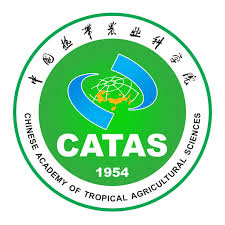| Title | Improving transcriptome de novo assembly by using a reference genome of a related species: Translational genomics from oil palm to coconut. |
| Publication Type | Journal Article |
| Year of Publication | 2017 |
| Authors | Armero A, Baudouin L, Bocs S, This D |
| Journal | PLoS One |
| Volume | 12 |
| Issue | 3 |
| Pagination | e0173300 |
| Date Published | 2017 |
| ISSN | 1932-6203 |
| Keywords | Arecaceae, Cocos, Genome, Plant, Genomics, Microsatellite Repeats, Transcriptome |
| Abstract | The palms are a family of tropical origin and one of the main constituents of the ecosystems of these regions around the world. The two main species of palm represent different challenges: coconut (Cocos nucifera L.) is a source of multiple goods and services in tropical communities, while oil palm (Elaeis guineensis Jacq) is the main protagonist of the oil market. In this study, we present a workflow that exploits the comparative genomics between a target species (coconut) and a reference species (oil palm) to improve the transcriptomic data, providing a proteome useful to answer functional or evolutionary questions. This workflow reduces redundancy and fragmentation, two inherent problems of transcriptomic data, while preserving the functional representation of the target species. Our approach was validated in Arabidopsis thaliana using Arabidopsis lyrata and Capsella rubella as references species. This analysis showed the high sensitivity and specificity of our strategy, relatively independent of the reference proteome. The workflow increased the length of proteins products in A. thaliana by 13%, allowing, often, to recover 100% of the protein sequence length. In addition redundancy was reduced by a factor greater than 3. In coconut, the approach generated 29,366 proteins, 1,246 of these proteins deriving from new contigs obtained with the BRANCH software. The coconut proteome presented a functional profile similar to that observed in rice and an important number of metabolic pathways related to secondary metabolism. The new sequences found with BRANCH software were enriched in functions related to biotic stress. Our strategy can be used as a complementary step to de novo transcriptome assembly to get a representative proteome of a target species. The results of the current analysis are available on the website PalmComparomics (http://palm-comparomics.southgreen.fr/). |
| DOI | 10.1371/journal.pone.0173300 |
| Alternate Journal | PLoS One |
| PubMed ID | 28334050 |
| PubMed Central ID | PMC5363918 |
- Log in or register to post comments
- Google Scholar
- PubMed




